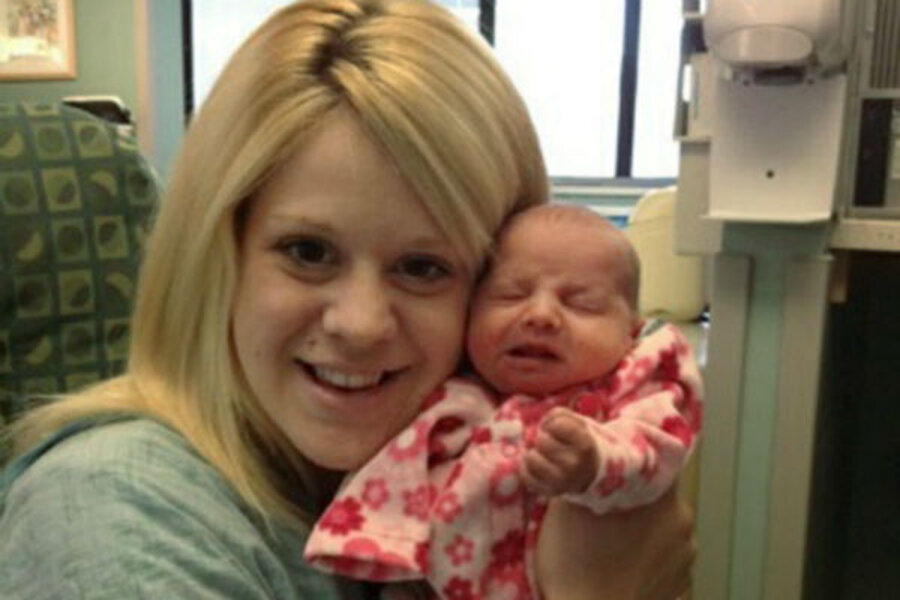Painkiller addiction becoming more common in infants, study shows
Loading...
| Chicago
Less than a month old, Savannah Dannelley scrunches her tiny face into a scowl as a nurse gently squirts a dose of methadone into her mouth.
The infant is going through drug withdrawal and is being treated with the same narcotic prescribed for her mother to fight addiction to powerful prescription painkillers.
Disturbing new research says the number of U.S. babies born with signs of opiate drug withdrawal has tripled in a decade because of a surge in pregnant women's use of legal and illegal narcotics, including Vicodin, OxyContin and heroin, researchers say. It is the first national study of the problem.
The number of newborns with withdrawal symptoms increased from a little more than 1 per 1,000 babies sent home from the hospital in 2000 to more than 3 per 1,000 in 2009, the study found. More than 13,000 U.S. infants were affected in 2009, the researchers estimated.
The newborns include babies like Savannah, whose mother stopped abusing painkillers and switched to prescription methadone early in pregnancy, and those whose mothers are still abusing legal or illegal drugs.
Weaning infants from these drugs can take weeks or months and often requires a lengthy stay in intensive care units. Hospital charges for treating these newborns soared from $190 million to $720 million between 2000 and 2009, the study found.
The study was released online Monday in the Journal of the American Medical Association.
Savannah is hooked up to heart and oxygen monitors in an Oak Lawn, Ill., newborn intensive care unit. In a pink crib, she sleeps fitfully, sometimes cries all night, and has had diarrhea and trouble feeding — typical signs of withdrawal. Some affected babies also have breathing problems, low birth weights and seizures.
It nearly breaks her young mother's heart.
"It's really hard, every day, emotionally and physically," said Aileen Dannelley, 25. "It's really hard when your daughter is born addicted."
Doctors say newborns aren't really addicted — which connotes drug-seeking behavior that babies aren't capable of — but their bodies are dependent on methadone or other opiates because of their mothers' use during pregnancy. Small methadone doses to wean them off these drugs is safer than cutting them off altogether, which can cause dangerous seizures and even death, said Dr. Mark Brown, chief of pediatrics at Eastern Maine Medical Center.
Newborn drug withdrawal is rampant in Maine, Florida, West Virginia, parts of the Midwest and other sections of the country.
Dr. Stephen Patrick, the lead author of the study and a newborn specialist at the University of Michigan health system in Ann Arbor, called the problem a "public health epidemic" that demands attention from policymakers, as well as from researchers to clarify what long-term problems these infants may face.
University of Maine scientist Marie Hayes said her research suggests some affected infants suffer developmental delays in early childhood, but whether those problems persist is uncertain.
It's the 21st century version of what was known as the "crack baby" epidemic of the 1980s. Some experts say that epidemic was overblown and that infants born to mothers using crack cocaine face no serious long-term health problems.
Some think the current problem is being overblown, too.
Carl Hart, an assistant psychiatry professor at Columbia University and a substance abuse researcher at the New York Psychiatric Institute, noted that only a tiny portion of the estimated 4 million U.S. infants born each year are affected.
Hart also said the study probably includes women who weren't abusing drugs during pregnancy, but were taking prescribed painkillers for legitimate reasons. He said he worries that the study will unfairly stigmatize pregnant women who are "doing the right thing" by taking methadone to fight their addiction.
Doctors pushing powerful painkillers "like candy" contribute to the problem, said Arturo Valdez, who runs the Chicago substance abuse program that Aileen Dannelley attends. Patients at his West Side clinic include men and women who are prescribed opiate painkillers for legitimate reasons, such as car accident injuries, and find themselves addicted when the prescriptions runs out. Some turn to street drugs, which can be cheaper and easier to obtain, Valdez said.
In some states, mothers of newborns with drug withdrawal are arrested and jailed, but Valdez said addiction is a brain disease that should be treated like other illnesses, not stigmatized.
Aileen Dannelley said she started abusing drugs after an adult neighbor introduced her to crack when she was 14. She said she would "never have touched it" if she had known how addictive drugs can be.
She said she has abused Vicodin, which a doctor gave her to treat back pain from sitting all day at an office job, as well as other prescription painkillers and heroin.
Dannelley was still abusing drugs early in her pregnancy but decided in December to quit, vowing: "I'm not going to go back to that lifestyle. There's a baby inside me."
Related: Are you a Helicopter Parent? Take our quiz to find out!
Now she is trying to get her life back on track. Estranged from her husband, she is living with her parents and just signed up for nursing classes at a local junior college. She visits Savannah every day. The baby has been in the hospital since she was born in early April, and her mother hopes to take her home soon.
"I am doing so good for the first time in my life," Dannelley said.





